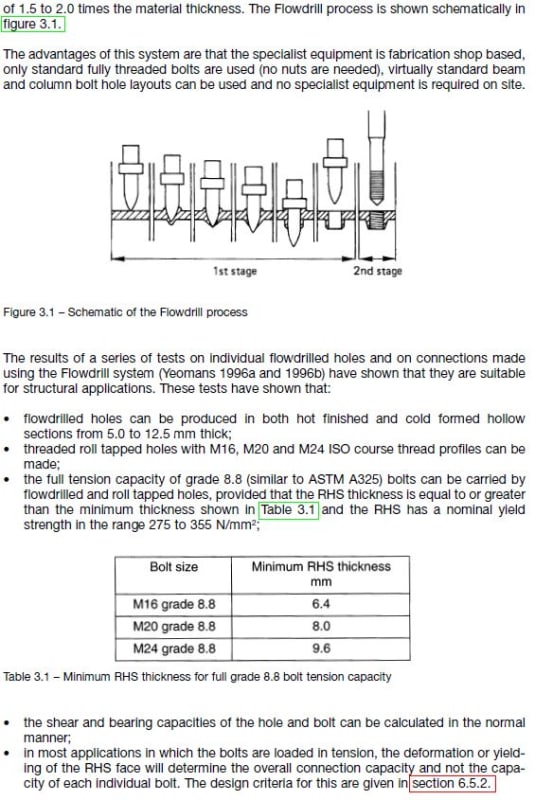Toby23goat
Mechanical
- Dec 13, 2019
- 2
I am designing a bolted connection for a steel assembly, where the A490 bolts are required to be pretensioned per RCSC due to the loading condition. My issue is that the bolt connects an outer plate with a thru hole to a threaded plate since there is no access on the other side of the threaded plate to use a hex nut. I can find no guidance in RCSC for this type of connection. All I know to do is check the shear stress of the 50 ksi plate inside threads. Can I assume the full length of thread engagement for my shear plane? Also, very importantly, how do I perform skidmore testing for a connection like this? Any guidance would be much appreciated.
I do not have any flexibility to change the connection design at this stage - I am only looking for advise on how to analyze it and perform skidmore testing.
I do not have any flexibility to change the connection design at this stage - I am only looking for advise on how to analyze it and perform skidmore testing.


